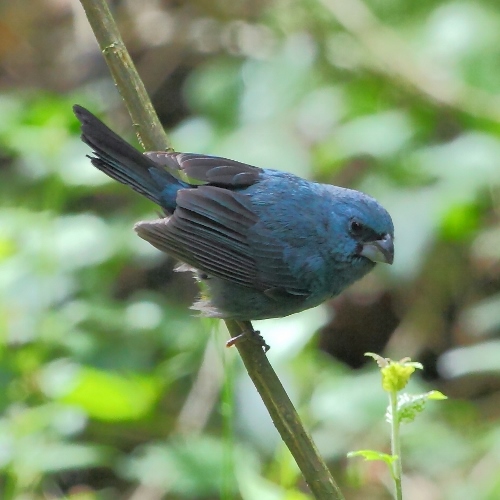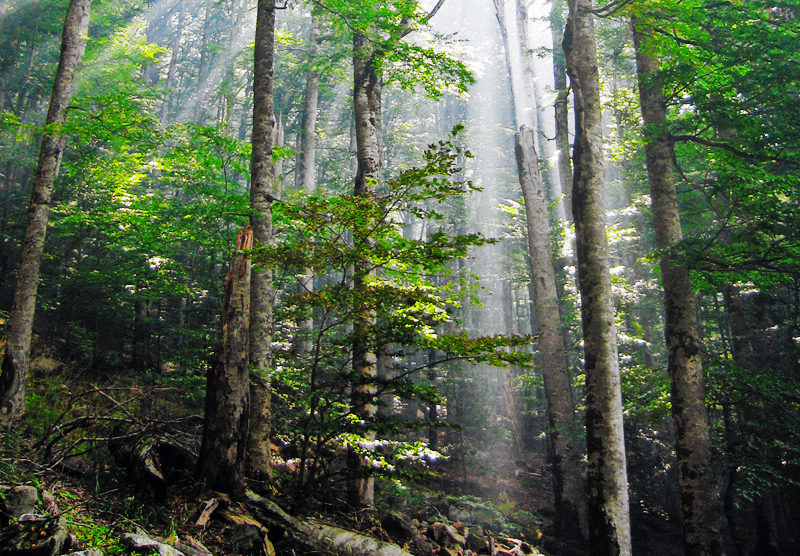|
Amazonian Grosbeak
The Amazonian grosbeak or Rothschild's grosbeak (''Cyanoloxia rothschildii'') is a species of grosbeak in the family Cardinalidae, the cardinals or cardinal grosbeaks. It is found in much of the Amazon Basin, in Bolivia, Brazil, Colombia, French Guiana, Guyana, Peru, Suriname, and Venezuela.Fitzgibbon, D. and N. L. Block (2020). Amazonian Grosbeak (''Cyanoloxia rothschildii''), version 1.0. In Birds of the World (T. S. Schulenberg, Editor). Cornell Lab of Ornithology, Ithaca, NY, USA. https://doi.org/10.2173/bow.bubgro2.01 retrieved May 17, 2021 Taxonomy and systematics The Amazonian grosbeak is monotypic. It was formerly considered a subspecies of blue-black grosbeak (''Cyanoloxia cyanoides'') and following 2014 and 2016 publications it was elevated to species status.García, N.C., Barreira, A.S., Kopuchian, C. and Tubaro, P.L. (2016). Congruence of phenotypic and genetic variation at the subspecific level in a Neotropical passerine. Ibis. 158(4): 844–856.Remsen, J. V., ... [...More Info...] [...Related Items...] OR: [Wikipedia] [Google] [Baidu] |
Edward Bartlett
Edward Bartlett (1836 – April 1908) was an English ornithologist and herpetologist. He was the son of Abraham Dee Bartlett. Bartlett accompanied Henry Baker Tristram to Palestine in 1863–64, and collected in the Amazon basin and Peru in 1865–69. He was curator at the Maidstone Museum from 1875 to 1890, and curator of the Sarawak Museum from 1893 to 1897. One of his most notable publications, though uncompleted at the time of his death, was his "''Monograph of the Weaver Birds (Ploceidae) and Arboreal and Terrestrial Finches'' ", of which five parts were published in 1888–89. His most notable herpetological publication, "''The Crocodiles and Lizards of Borneo in the Sarawak Museum, with Descriptions of Supposed New Species and the Variation of Colours in the Several Species during Life'' ", was published in 1895. Species named after Bartlett include Bartlett's tinamou ''Crypturellus bartletti'' of Peru - the name being assigned in 1873 by fellow British ornithologists ... [...More Info...] [...Related Items...] OR: [Wikipedia] [Google] [Baidu] |
Monotypic
In biology, a monotypic taxon is a taxonomic group (taxon) that contains only one immediately subordinate taxon. A monotypic species is one that does not include subspecies or smaller, infraspecific taxa. In the case of genera, the term "unispecific" or "monospecific" is sometimes preferred. In botanical nomenclature, a monotypic genus is a genus in the special case where a genus and a single species are simultaneously described. In contrast, an oligotypic taxon contains more than one but only a very few subordinate taxa. Examples Just as the term ''monotypic'' is used to describe a taxon including only one subdivision, the contained taxon can also be referred to as monotypic within the higher-level taxon, e.g. a genus monotypic within a family. Some examples of monotypic groups are: Plants * In the order Amborellales, there is only one family, Amborellaceae and there is only one genus, '' Amborella'', and in this genus there is only one species, namely ''Amborella trichopoda.' ... [...More Info...] [...Related Items...] OR: [Wikipedia] [Google] [Baidu] |
Cyanoloxia
''Cyanoloxia'' is a genus of grosbeak in the family Cardinalidae. Species It contains the following species: External links * * Bird genera Taxa named by Charles Lucien Bonaparte Taxonomy articles created by Polbot {{Passeroidea-stub ... [...More Info...] [...Related Items...] OR: [Wikipedia] [Google] [Baidu] |
IUCN
The International Union for Conservation of Nature (IUCN; officially International Union for Conservation of Nature and Natural Resources) is an international organization working in the field of nature conservation and sustainable use of natural resources. It is involved in data gathering and analysis, research, field projects, advocacy, and education. IUCN's mission is to "influence, encourage and assist societies throughout the world to conserve nature and to ensure that any use of natural resources is equitable and ecologically sustainable". Over the past decades, IUCN has widened its focus beyond conservation ecology and now incorporates issues related to sustainable development in its projects. IUCN does not itself aim to mobilize the public in support of nature conservation. It tries to influence the actions of governments, business and other stakeholders by providing information and advice and through building partnerships. The organization is best known to the wider ... [...More Info...] [...Related Items...] OR: [Wikipedia] [Google] [Baidu] |
Macaulay Library
The Macaulay Library is the world's largest archive of animal sounds. It includes more than 33 million photographs, 1.2 million audio recordings, and over two hundred thousand videos covering 96 percent of the world's bird species. There are an ever-increasing numbers of insect, fish, frog, and mammal recordings. The Library is part of Cornell Lab of Ornithology of Cornell University. History Arthur Augustus Allen and Peter Paul Kellogg made the first recordings of bird sound on May 18, 1929 in an Ithaca park. They used motion-picture film with synchronized sound to record a song sparrow, a house wren, and a rose-breasted grosbeak. This was the Beginning of Cornell Library of Natural Sounds. Graduate student Albert R. Brand and Cornell undergraduate M. Peter Keane developed recording equipment for use in the open field. In the next two years they had successfully recorded more than 40 species of birds. In 1931 Peter Keane and True McLean (a Cornell professor in Electrical Engin ... [...More Info...] [...Related Items...] OR: [Wikipedia] [Google] [Baidu] |
Xeno-canto
xeno-canto is a citizen science project and repository in which volunteers record, upload and annotate recordings of birdsong and bird calls. Since it began in 2005, it has collected over 575,000 sound recordings from more than 10,000 species worldwide, and has become one of the biggest collections of bird sounds in the world. All the recordings are published under one of the Creative Commons licenses, including some with open licences. Each recording on the website is accompanied by a spectrogram and location data on a map displaying geographical variation. Data from xeno-canto has been re-used in many (a few thousand) scientific papers. It has also been the source of data for an annual challenge on automatic birdsong recognition ("BirdCLEF") since 2014, conducted as part of the Conference and Labs of the Evaluation Forum. The website is supported by a number of academic and birdwatching institutions worldwide, with its primary support being in the Netherlands ) , ant ... [...More Info...] [...Related Items...] OR: [Wikipedia] [Google] [Baidu] |
Phenology
Phenology is the study of periodic events in biological life cycles and how these are influenced by seasonal and interannual variations in climate, as well as habitat factors (such as elevation). Examples include the date of emergence of leaves and flowers, the first flight of butterflies, the first appearance of migratory birds, the date of leaf colouring and fall in deciduous trees, the dates of egg-laying of birds and amphibia, or the timing of the developmental cycles of temperate-zone honey bee colonies. In the scientific literature on ecology, the term is used more generally to indicate the time frame for any seasonal biological phenomena, including the dates of last appearance (e.g., the seasonal phenology of a species may be from April through September). Because many such phenomena are very sensitive to small variations in climate, especially to temperature, phenological records can be a useful proxy for temperature in historical climatology, especially in the ... [...More Info...] [...Related Items...] OR: [Wikipedia] [Google] [Baidu] |
Secondary Forest
A secondary forest (or second-growth forest) is a forest or woodland area which has re-grown after a timber harvest or clearing for agriculture, until a long enough period has passed so that the effects of the disturbance are no longer evident. It is distinguished from an old-growth forest (primary or primeval forest), which has not recently undergone such disruption, and complex early seral forest, as well as third-growth forests that result from harvest in second growth forests. Secondary forest regrowing after timber harvest differs from forest regrowing after natural disturbances such as fire, insect infestation, or windthrow because the dead trees remain to provide nutrients, structure, and water retention after natural disturbances. However, often after natural disturbance the timber is harvested and removed from the system, in which case the system more closely resembles secondary forest rather than seral forest. Description Depending on the forest, the development ... [...More Info...] [...Related Items...] OR: [Wikipedia] [Google] [Baidu] |
Primary Forest
An old-growth forestalso termed primary forest, virgin forest, late seral forest, primeval forest, or first-growth forestis a forest that has attained great age without significant disturbance, and thereby exhibits unique ecological features, and might be classified as a climax community. The Food and Agriculture Organization of the United Nations defines primary forests as naturally regenerated forests of native tree species where there are no clearly visible indications of human activity and the ecological processes are not significantly disturbed. More than one-third (34 percent) of the world's forests are primary forests. Old-growth features include diverse tree-related structures that provide diverse wildlife habitat that increases the biodiversity of the forested ecosystem. Virgin or first-growth forests are old-growth forests that have never been logged. The concept of diverse tree structure includes multi-layered canopies and canopy gaps, greatly varying tree hei ... [...More Info...] [...Related Items...] OR: [Wikipedia] [Google] [Baidu] |
The Guianas
The Guianas, sometimes called by the Spanish loan-word ''Guayanas'' (''Las Guayanas''), is a region in north-eastern South America which includes the following three territories: * French Guiana, an overseas department and region of France * Guyana, formerly known as British Guiana from 1831 until 1966, after the colonies of Berbice, Essequibo, and Demerara, taken from the Netherlands in 1814, were merged into a single colony * Suriname, formerly Dutch Guiana, until 1814 together with Berbice, Essequibo and Demerara In the wider context, the Guianas also includes the following two territories: * Guayana Region in eastern Venezuela ( Amazonas, Bolívar, and Delta Amacuro states), formerly the Guayana Province, alternatively known as Spanish Guayana * State of Amapá in northern Brazil, known as Portuguese Guiana (or Brazilian Guiana) History Pre-colonial period Before the arrival of European colonials, the Guianas were populated by scattered bands of native Ar ... [...More Info...] [...Related Items...] OR: [Wikipedia] [Google] [Baidu] |
Blue-black Grosbeak
The blue-black grosbeak (''Cyanoloxia cyanoides'') is a species of songbird in the family Cardinalidae. The South American Classification Committee of the American Ornithological Society places this species in genus ''Cyanoloxia''. In addition, in 2018 the committee split the eastern lowland population into a new species, Amazonian grosbeak (''Cyanoloxia rothschildii''). Taxonomy and systematics The blue-black grosbeak is found in the family Cardinalidae, within the order Passeriformes. Although it is still sometimes placed in the genus ''Cyanocompsa'', it was found that this genus is paraphyletic and contains members of the genus Amaurospiza and ''Cyanoloxia''. There are three subspecies in this taxa: ''Cyanoloxia cyanoides cyanoides, Cyanoloxia cyanoides caerulescens,'' and ''Cyanoloxia cyanoides concreta.'' Although these three subspecies are very similar, there are slight differences between them. Males all have dark blue plumage, however, ''C.c. concreta'' has the darkest ... [...More Info...] [...Related Items...] OR: [Wikipedia] [Google] [Baidu] |
Venezuela
Venezuela (; ), officially the Bolivarian Republic of Venezuela ( es, link=no, República Bolivariana de Venezuela), is a country on the northern coast of South America, consisting of a continental landmass and many islands and islets in the Caribbean Sea. It has a territorial extension of , and its population was estimated at 29 million in 2022. The capital and largest urban agglomeration is the city of Caracas. The continental territory is bordered on the north by the Caribbean Sea and the Atlantic Ocean, on the west by Colombia, Brazil on the south, Trinidad and Tobago to the north-east and on the east by Guyana. The Venezuelan government maintains a claim against Guyana to Guayana Esequiba. Venezuela is a federal presidential republic consisting of 23 states, the Capital District and federal dependencies covering Venezuela's offshore islands. Venezuela is among the most urbanized countries in Latin America; the vast majority of Venezuelans live in the cities of ... [...More Info...] [...Related Items...] OR: [Wikipedia] [Google] [Baidu] |



